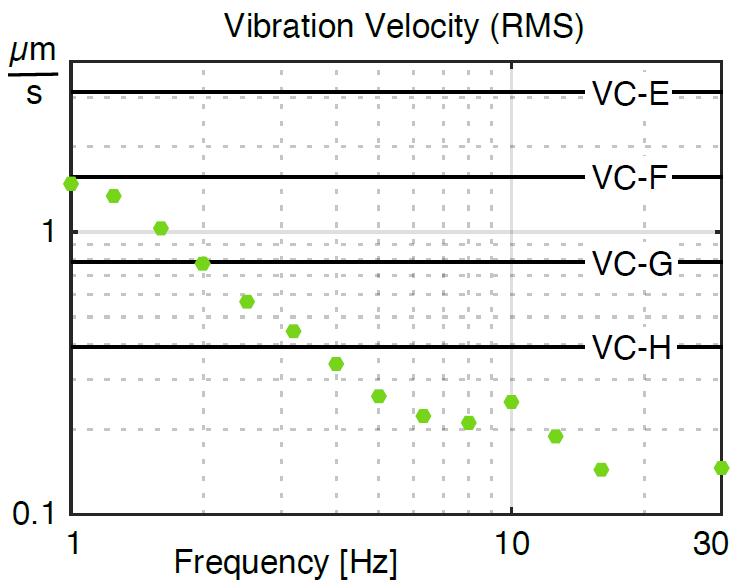How Seismion optimizes the performance of Reactio vibration isolator using multiphysics models and transmissibility curves
The transmissibility is probably the most important property of vibration isolators. Basically the transmissibility can be regarded as the amount of vibration that gets through the isolator divided by the vibration that is present on the base where the isolator is placed.
Based on the mechanical properties like the stiffness, damping and the mass upon the isolator, as well as the sensitivity of the sensors, the actuator constant, and – most importantly – the control circuitry, we have built multiphysics computer models that allow us to calculate the transmissibility of an isolator with a given parameter set. This is an important part in our development and design of our vibration technology products, since it allows us to figure out interdependencies between the different subsystems, determine stability limits, perform parameter studies, and to make optimizations of the overall system before actually building up an isolator.
With the help of these models, we can even shape the transmissibility curve according to the needs of the end user and its application. Depending on the specific requirements, some applications might need a stronger isolation already in the very low frequency range like 1-2 Hz, while other applications can to some amount sacrifice this low frequency performance for an even higher isolation in the range 10-100 Hz, for example. The natural stability limits of feedback-controlled systems require to make a trade-off between conflicting goals, which can ideally be solved by our computer models.
However, beside linear model behaviour, several other influences need to be studied. Using rather simple linear models, the calculated transmissibility curve would be always the same for a given vibration isolator, no matter what kind of vibration excitation you apply to the system. But testing an isolator in real world will reveal many more factors that matter.
Probably easy to understand is the influence of the maximum forces, that the vibration isolator can generate. Due to the limits of the control circuitry and the actuator itself, every active system is limited to some extend. In cases with strong excitations, the feedback control is saturated, and the generated control force does not grow linearly with the excitation anymore. As a result, the isolation performance is reduced.
At the other extremum, also very small excitation is a challenge for vibration isolators. Since every electronics, and even the piezoelectric sensors, exhibit a certain amount of noise, this noise translates into a noisy actuator force, which excites the top-plate to vibrations. This noise is always present, but normally it is multiple times smaller than the real signal from the sensors and therefore it is no concern. But high-precision applications are typically already placed in a vibration-free surrounding, and in this case the signal-to-noise ratio gets worse, and as a result also the isolation performance. Actually, the noise in the control loop determines the lowest vibration levels, that the top-plate can fulfill.
Seismion Reactio vibration isolators are designed especially with these interdependencies in mind. Our sensors are developed in-house and offer the very high sensitivity that we need. Together with the dedicated, low-noise electronics we have realized an exceptional good signal-to-noise ratio. As a result, the isolator also works perfectly even under low excitation levels. This can easily be proven by the Vibration Criteria curves (VC-curves), that the isolator can realize. From our measurements, VC-F is met already from 1 Hz, and VC-G already from 2 Hz. These vibration criteria levels are extremely tight, and currently not even used as design criteria, but only for evaluation. VC-E is in fact the design criterion for most demanding sensitive equipment like E-beam lithography at nanometer scales, which our Seismion Reactio isolator easily fulfills.

It should be noted that even passive isolators like air springs have significantly lower performance (or even no performance at all) under low excitation levels, since the air springs do not elastically deform under small vibration amplitudes.
Concerning the maximum forces, the Seismion Reactio are higher than most of the competitor products, meaning that they can also isolate strong disturbances.
Such complex and sophisticaled systems like active vibration isolators also have to be tested thoroughly beside the computer optimization. This will be discussed in the next blog entry.
